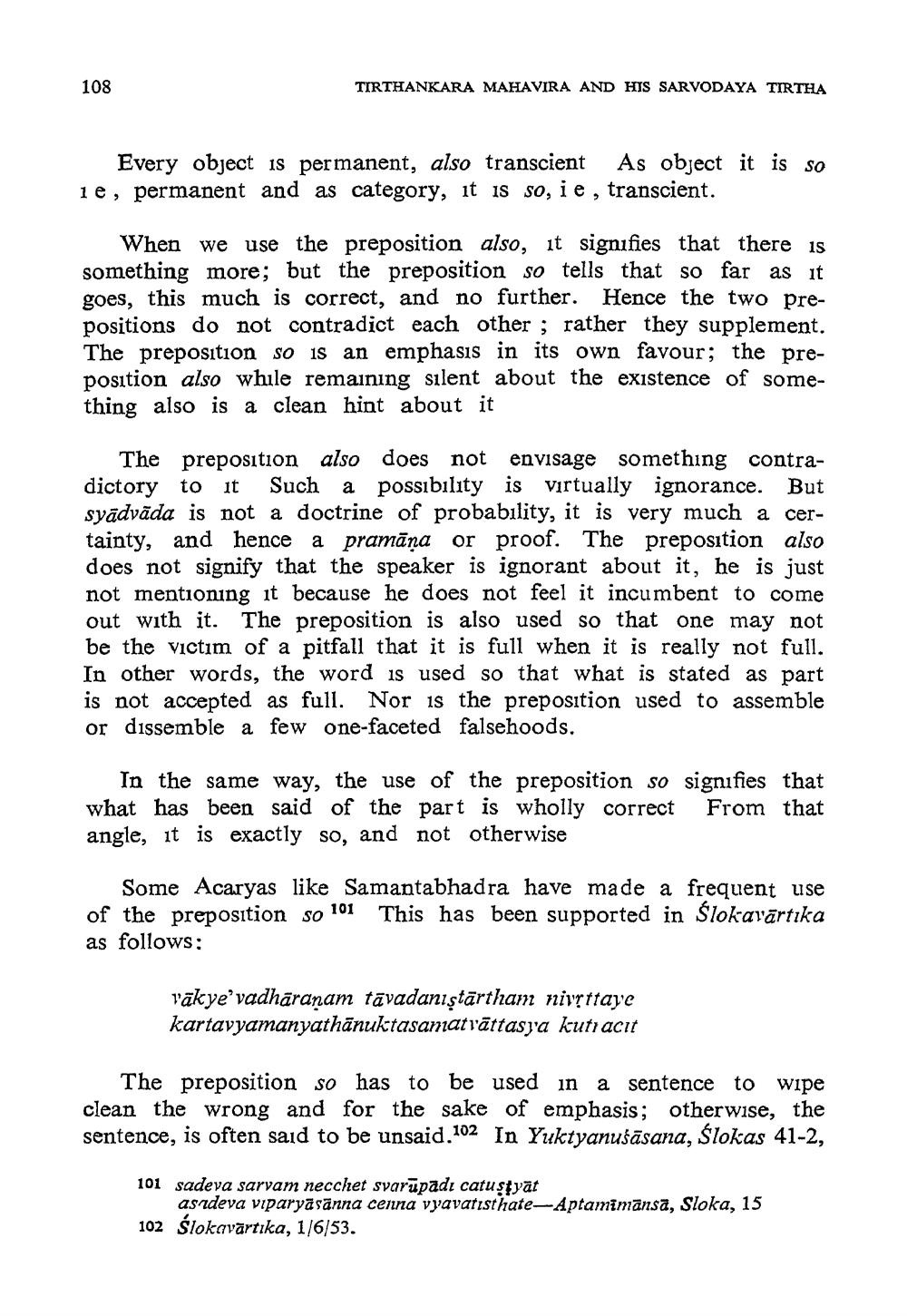________________
108
TIRTHANKARA MAHAVIRA AND HIS SARVODAYA TIRTHA
Every object is permanent, also transcient As object it is so ie, permanent and as category, it is so, ie, transcient.
When we use the preposition also, it signifies that there is something more; but the preposition so tells that so far as it
this much is correct, and no further. Hence the two prepositions do not contradict each other ; rather they supplement. The preposition so is an emphasis in its own favour; the preposition also while remaining silent about the existence of something also is a clean hint about it
The preposition also does not envisage something contradictory to it Such a possibility is virtually ignorance. But svadvāda is not a doctrine of probability, it is very much a certainty, and hence a pramāna or proof. The preposition also does not signify that the speaker is ignorant about it, he is just not mentioning it because he does not feel it incumbent to come out with it. The preposition is also used so that one may not be the victim of a pitfall that it is full when it is really not full. In other words, the word is used so that what is stated as part is not accepted as full. Nor is the preposition used to assemble or dissemble a few one-faceted falsehoods.
In the same way, the use of the preposition so signifies that what has been said of the part is wholly correct From that angle, it is exactly so, and not otherwise
Some Acaryas like Samantabhadra have made a frequent use of the preposition so 101 This has been supported in Ślokavārtika as follows:
vakye vadhāranam tavadanı stārtham nivyttaye kartavyamanyathānuktasaniaträttasya kuti acıt
The preposition so has to be used in a sentence to wipe clean the wrong and for the sake of emphasis; otherwise, the sentence, is often said to be unsaid.102 In Yuktyanušāsana, Slokas 41-2,
101 sadeva sarvam necchet svarupadı catustyat
asdeva viparya sānna cenna vyavatısthate-Aptamimansa, Sloka, 15 102 Ślokavārtika, 1/6/53.




